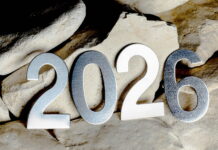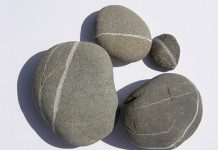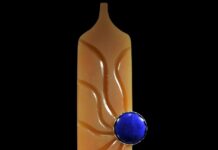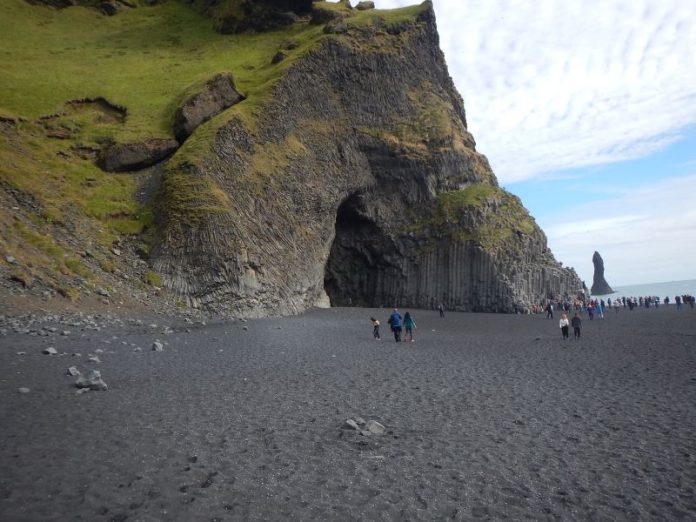
Stunning black sand beaches can be found around the world. Some, a tropical paradise, but Reynisfjara, on the southern coast of Iceland, is not only one of the world’s most beautiful black sand beaches, it’s one of the most dangerous—even deadly.
Most black sand beaches are a result of volcanic activity, while others are rich in eroded magnetite. Before we explore how black sand beaches are formed and where to find a few of them, let’s take a closer look at Reynisfjara Black Sand Beach near the town of Vik on Iceland’s South coast.
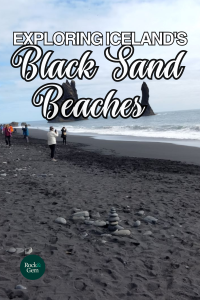
Danger! Sneaker Waves
Reynisfjara’s adjacent beach, Vikurfjara, closer to the town of Vik, is sometimes considered a separate beach, but is actually the same place. As visitors approach the beach at Reynisfjara, multiple signs with lights, signal—WARNING—DANGER! On a recent visit, our tour guide spoke to our group for several minutes on the dangers of this beautiful beach.
He said, “don’t go close to the water and NEVER turn your back on the ocean.” Just to emphasize his warning, he said, “In November of 2022, an older couple was visiting. They received this same warning, but wanted a photo close to the ocean. A sneaker wave took both of them into the rough surf.
Bystanders were able to pull the man out, but they couldn’t save his wife.”
Why is this beach so dangerous? One factor may be that there are no land masses between it and Antarctica. The sneaker waves are also accompanied by strong currents and extreme rip tides which make it almost impossible to return to shore after being swept into the ocean. Another reason for danger and a warning not to swim here, is that the water temperature remains cold all year long—45°F in January to a balmy 53°F in August.
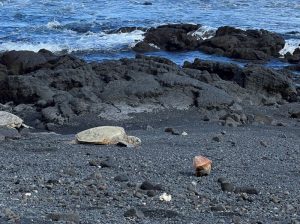
Courtesy Walt & Diana Willing
Why Reynisfjara is Popular
Besides having the designation as one of the ‘blackest’ black sand beaches in the world, Reynisfjara also has spectacular basalt features. Most prominent are the two basalt column caves on land and numerous basalt column features, just offshore.
The caves located on the beach are made up of both columnar (straight and parallel) and entablature (morphed and irregularly) shaped basalt columns. These caves are not only popular with photographers but also as a wedding venue.
The features located offshore are also a photographer’s dream, especially in the winter months when the northern lights (aurora borealis) dance in the night sky, to enhance the landscape.
Icelandic troll legends also play a role in the popularity of these offshore structures. It is said that the trolls went into the sea, in the late evening to lure ships to shore. The trolls had not made it back to shore before the sun rose over the horizon and it turned them to stone.
Another reason for the popularity of this beach is bird-watching opportunities. The cliffs above the caves and on other nearby beaches are home to various Icelandic bird species, especially puffins.
If you need one more reason to visit, fans of the “Game of Thrones” will recognize this beach as one of the show’s filming sites in season seven.
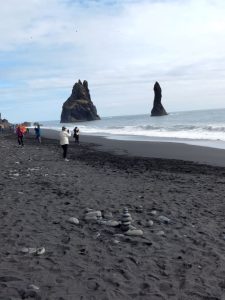
Courtesy Sue Eyre
Volcanic Black Sand Formation
Most black sand is formed when volcanic rock is broken down by the elements—wind and waves and extreme environmental conditions over millions of years. In some cases, the hot lava travels to the sea, cools and erodes at the shore, while other basalt erodes far inland and makes its way to the sea.
The resulting black sand is made up of fragments of basalt. Because basalt is formed from cooling lava, those fragments or grains of sand, can vary in size and appearance based on the type of lava, the forces of nature that caused the erosion, how long it was subject to those forces, and the amount of polishing the sand received on its way down to the sea. The sand can be dull and gray to dark black or shiny and bright, obsidian or glass-like, with a consistency from fine to small pebbles.
The black sand beaches near Vik are the result of this erosion process from Katla volcano, one of the largest volcanos in southern Iceland. Katla’s last major eruption was in 1918, but it is the heart of the volcanic system in southern Iceland and has been producing black sand for a millennium.
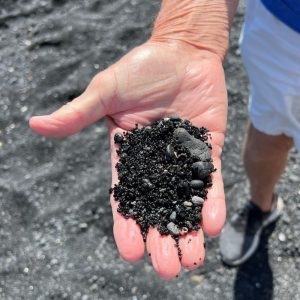
Courtesy Jan & Jim Heberlein
Black Sand Beaches: Other Icelandic South Shore Locations
If you travel the ‘ring road’ from the capital city of Reykjavik along the south coast of Iceland, you may stop at several other sites that give clues as to how the numerous black sand beaches in the area formed.
Stops at the waterfalls of Seljalandsfoss and Skogafoss, greet visitors with shorelines filled with black sand. Much more black sand is carried downstream with their rivers to the beaches nearby.
Further down the road, a brief detour inland will take you to Solheimajokull Glacier. Here you will notice what looks like very dirty snow. Actually, it’s just some of the eroded basalt grains of sand hitching a ride to the beach.
Volcanic black sand beaches can be found all over the world from the U.S. to the Caribbean, South Pacific, Asia and Europe, but what else can cause these beautiful beaches?
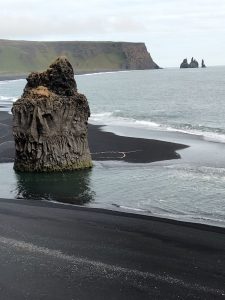
Courtesy Sue Eyre
Iron-Rich Magnetite Black Sand Beaches
Another reason for black beaches is sand that contains magnetite, rich in iron oxide and often, other precious metals. It is the result of the erosion of igneous rock rather than volcanic rock.
Magnetite-rich black sand goes through a similar process. The rock erodes inland and is carried to the oceans by rivers. It is further concentrated by wave action and currents and mixed with other sands before being deposited on the world’s beaches and therefore, not as dark in color as volcanic black sand.
Magnetite-rich beaches are also found all over the world. A few of the most famous ones are Lung Kwu Tan near Hong Kong and the beaches along the west coast of New Zealand. Closer to home, there is a 20-mile stretch of iron-rich beach near Whitehouse, California. The sand there is not very dark, but dark enough to make the list.
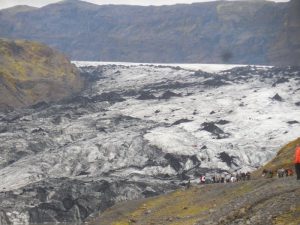
Courtesy Sue Eyre
Inland Magnetite-Rich Sand
Not all sand is found at the water’s edge. There are many famous deserts across the globe, but there are two quite famous for magnetite-rich black sand particles.
From a distance, the sand at Great Sand Dunes National Park in south-central Colorado, looks tan, like most sand. But when you take a closer look, some areas look darker than others. Because magnetite is heavier than the lighter-colored sand, it tends to settle in lower crevices while the lighter sand is blown over the magnetite to form drifts in other areas.
Magnetite-rich sand can be found in most areas of this National Park. Just look closely to see the darker grains of sand. If you go, be sure to stop at the visitor’s center to explore the magnetite exhibits. You might also want to bring a magnet and compass to do some experiments of your own.
Put some sand on a piece of white paper and move the magnet below the paper—the magnetic sand will adhere to the magnet and move around the paper. You may also just drag your magnet through the sand. If you hold a compass high above the sand, you may get some unusual readings as you move it closer to the sand. But as in all National Parks, NEVER remove any sand from the park.
A little farther from home, in southern Peru, at an altitude of over 6,500 feet, some magnetite-rich sand dunes cover over 100 square miles. This huge deposit of 10% magnetite-rich sand was first discovered in 2005 by the exploration company, Cardero Resources.
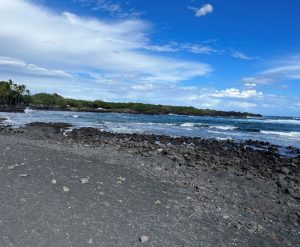
Courtesy Walt & Diana Willing
Hawaii’s Rival Black Sand Beaches
On the Big Island of Hawaii, Punalu’u Beach is probably the U.S. equivalent of Iceland’s famous volcanic black sand beaches. The sand at this beach is a result of the volcanic activity in nearby Volcanoes National Park. The sand here ranges from fine to very coarse, even glassy black obsidian pebbles.
The swimming area is very rocky and caution is advised as the waters can be dangerous, but nothing like its Icelandic counterpart.
There is a legend that freshwater flows underground and up through the volcanic sand offshore. Island natives say that in a time of drought, ancient Hawaiians dove underwater with jugs to retrieve ice-cold fresh water. In fact, puna lu’u means “spring water.”
Besides the dark black sand, one of the main attractions at Punalu’u Beach are endangered hawksbill and green turtles, often found sharing the beach with sunbathers and swimmers as the average year-round water temperature here is 78°F to 82°F.
Magnetite: 101Magnetite is a black to brown-black iron mineral, an oxide of iron and it is ferrimagnetic—which means it is attracted to a magnet and can be magnetized to become a magnet itself. In its solid form, magnetite has a Mohs hardness of 5 to 6. Small grains of magnetite can be found in igneous and metamorphic rocks as well as sedimentary rocks. When these rocks containing magnetite erode into small particles, they become black sand just like the volcanic basalt black sand. Because of its relatively heavy specific gravity, just over 5, magnetite is often found in placer miner’s gold pans and is a good indicator that gold could be close. Magnetite can also form crystals or, when it reacts with oxygen, it can produce hematite. Naturally magnetized pieces of magnetite are called lodestones and will attract small pieces of iron. Lodestones were responsible for the first discovery of the property of magnetism as well as an early form of a magnetic compass. Large quantities of magnetite can affect compass navigation as in the waters near Tasmania. |
More Black Sand Beaches Worth a Visit
No matter where you travel, black sand beaches can be found just about everywhere there are volcanoes. Here are just a few more to add to your bucket list.
- Stromboli, Italy
- Riviere Cyrique, Dominica
- El Bollullo Beach, Canary Islands
- Miho no Matsubara, Japan
- Vlychada, Greece
- Karekare Beach, New Zealand
- Anse Couleuvre, Martinique
- Playa Negra, Costa Rica
- Point Venus, Tahiti
- Ghost Point, California
Near or far, a black sand beach could be in your future. Just remember to bring your flip-flops or water socks, as black sand isn’t always as soft and easy on your feet as typical tan sand.
This story about black sand beaches previously appeared in Rock & Gem magazine. Click here to subscribe. Story by Sue Eyre.




